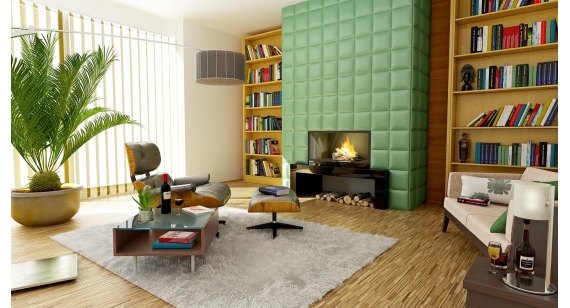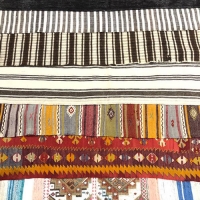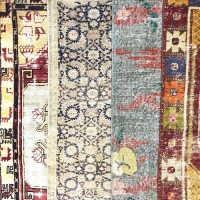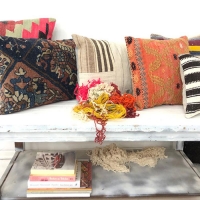
General Description of Rug
Flooring, divan places, usually patterned, lint-free, thick, bristle or wool textiles are expressed as rugs. In order to be laid on the floor of the rooms and tents, woven with woolen yarns on the loom, and thinner than the carpet, were also called rugs. Rugs are made by weaving small pieces of yarn, such as loop carpets, into knots, but not by touching them in the most shallow leaves such as cloth and fabric.
They
were also used as curtains. In the beginning, carpets were woven in
this way. Both the warp and weft wires of rugs are made of wool. The
kilim rugs are
embroidered in the rug while the rugs are touching the countertops
and colored wefts and warp yarns are brought to the body and their
faces and inverses are the same. These ornament shapes are not woven
with separate and piece yarns as in the woven carpets. The yarn of
the same color is continuously passed from one motif to the other, to
embellish the ornament motifs of that color. But there are no jumps
behind the rug. Such jump yarns are only seen in the rug section
called cicim. Woven rugs were given more importance compared to woven
carpets. The old rugs have beautiful beauties in terms of color and
embroidery. They have already reached the goal of modern art. Rug has
also been expressed as a lint-free slab weaving in some parts of
Central Asia, Anatolia, the Balkans and Iran. The most important
feature that distinguishes the rug from the carpet is that the
pattern and its surface are not formed by the individual loops placed
on top of the warp like the carpet.
The pattern in the rug is made by continuously passing the colored wool yarns between the warps. As a result, the surface of the rug acquires a thin and flat weave appearance; There is no difference between the opposite and the opposite. In order to weave the rug, we do not use woolen yarns, but also dyed wool balls which provide continuous yarn. In rugs which are very suitable for geometric patterns due to weaving technique, the patterns usually have symbolic meanings. Home, throne, hand, tree of life, dragon, bird, horn, hand waist, crow's feet, sun, flowers, rivers, mountain, such as nature and human life, are used by stylized. These patterns, which generally emerged as a means of expression in the beginning, have become specific to a particular region which has lost its narrative characteristics and has transformed into rugs.



